'Flash drought' brings dust and dread to Southern farmers
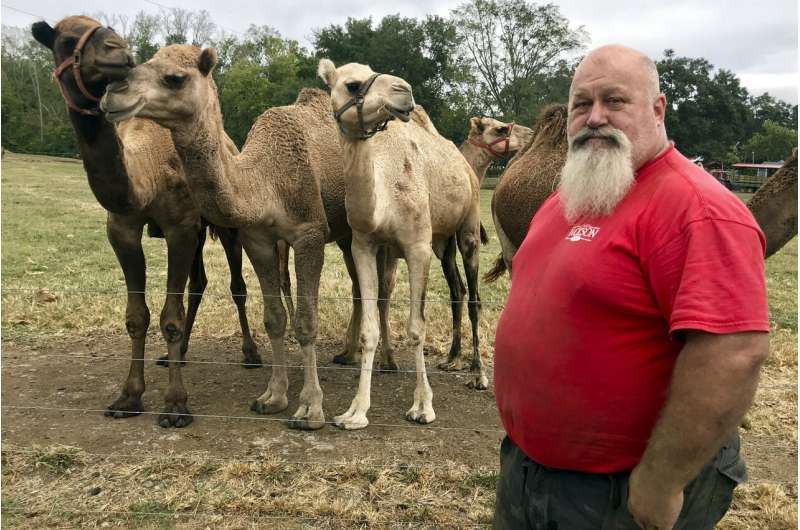
A furnace-like "flash drought" is intensifying as it blasts away the little moisture left across a vast swath of the South, wilting garden plants and raising alarm among farmers, according to a weekly report updated Thursday.
Nearly 56 million residents are now living in drought conditions in parts of 16 Southern states, according to the U.S. Drought Monitor report. That drought is classified as extreme in areas in Texas, Alabama, Georgia, Kentucky, South Carolina and Florida. From the arid plains of Texas to farms in Maryland, concern is spreading that cattle, cotton and corn are suffering after a summer of record highs and very little rain.
One of the bullseyes marking the nation's driest areas points to Georgia's Bartow County—farm country northwest of Atlanta—where extreme drought has left pastures bare and kicked up buckets of dust.
"If we don't get enough rain and the pastures don't recover, we'll be dipping into winter feeding hay before time, or have to liquidate some cattle," said Dean Bagwell, who has 350 cows now on land his family has farmed for nearly a century. Between the weather and relatively low cattle prices, he says "it just all plays into the frustration of trying to make a living farming."
The drought has ravaged crops across the South. Most of those in poor or very poor condition are listed in Georgia, Alabama, Kentucky, Tennessee, the Carolinas and West Virginia, the U.S. Department of Agriculture reported in its most recent crop report . Pasture and range conditions are even worse in Virginia, where 71% of the land is in poor or very poor shape.
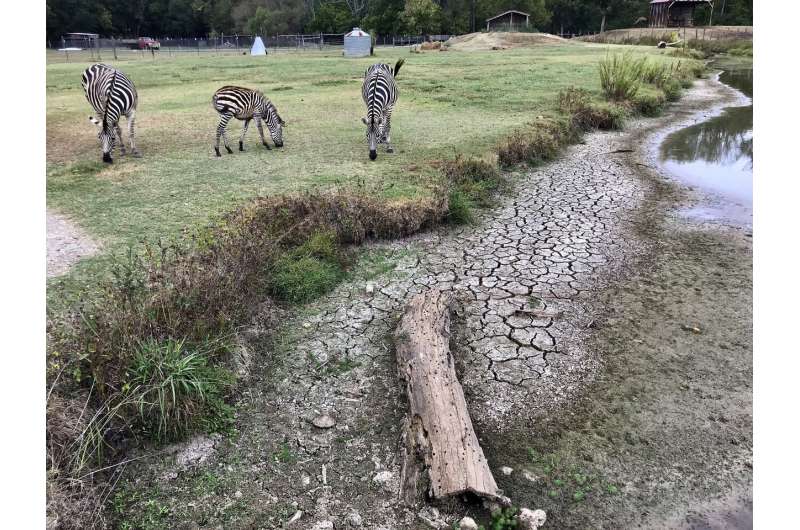
At Pettit Creek Farms in Cartersville, Georgia, where people come to see the kangaroos, camels and other wildlife, owner Scott Allen points out the "baked mud" and cracked earth in the bed of a small stream near his zebras. The natural spring water is nearly dried up, so he's using municipal water.
"It's been probably better than 60 days since we had any precipitation that amounted to anything," Allen said. "The dust is just relentless."
Thursday's drought report shows nearly half the population is experiencing drought in Texas, where the USDA crop report shows nearly a quarter of the cotton in poor or very poor condition. The situation is also dire in North Carolina, where 40% of the cotton and 30% of the corn is in poor or very poor shape. In Georgia, nearly 20% of the peanuts are in poor or very poor condition, the report shows.
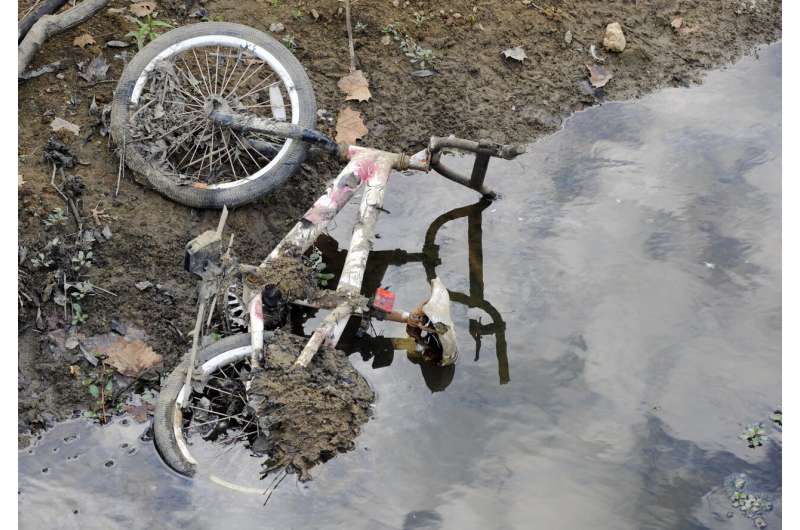
Forecasters blame the heat, along with the lack of rain: Georgia, Alabama, Mississippi and Florida all saw their driest September on record. Texas and Louisiana suffered through their hottest September on record, according to the report.
The combination of dry weather and intense heat can create what's now called a "flash drought."
The term came about during a 2001 drought in the Great Plains, when Mark Svoboda, director of the National Drought Mitigation Center, was looking for a way to describe its rapid onset. The "flash drought" phrase resonated, making headlines in The Omaha World-Herald and beyond. Back then, Svoboda and other scientists had few tools to track flash droughts, but since then, satellite imagery has provided much better data to monitor a rapidly-spreading drought, he said.
-
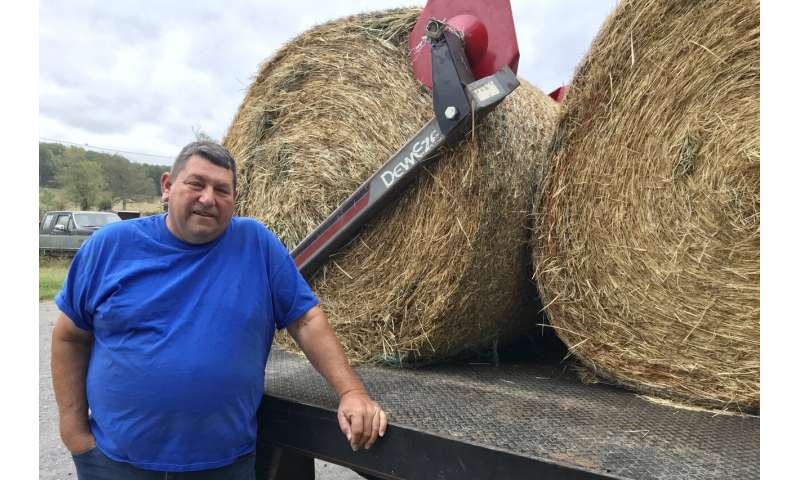
In this Oct. 7, 2019 photo, Georgia cattle farmer Dean Bagwell poses for a photo in Bartow County, Ga. Bagwell says the ongoing drought that's left his county among the driest in the nation has been frustrating for farmers. He said it could mean selling livestock if the situation doesn't improve. Bagwell farms in Bartow County, where farmers have been battling extreme drought. (AP Photo/Jeff Martin) -
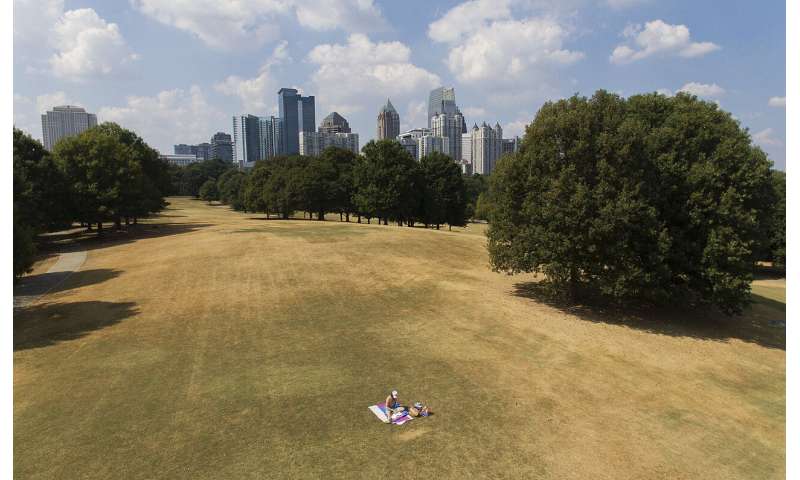
A man sunbathes amidst patches of dried out lawn from a lack of rain in Atlanta, Thursday, Oct. 3, 2019. Scientists say more than 45 million people across 14 Southern states are now in the midst of a drought that's cracking farm soil, drying up ponds and raising the risk of wildfires. (AP Photo/David Goldman) -
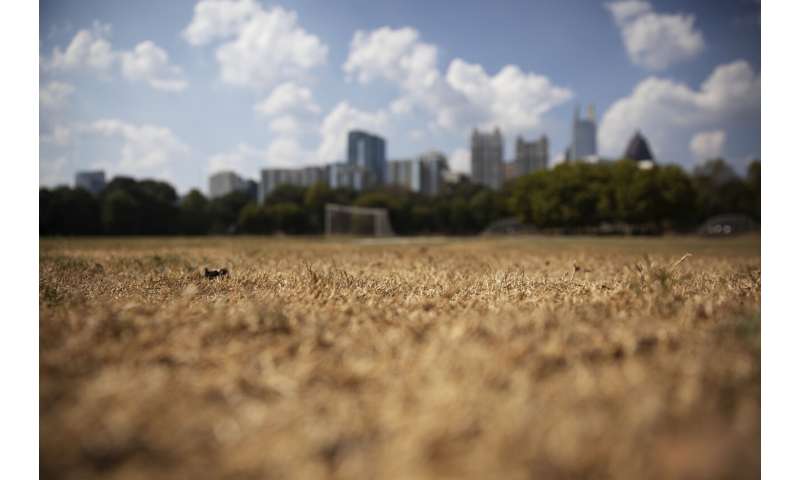
Dry grass from a lack of rain lays beneath the Midtown skyline in Atlanta, Thursday, Oct. 3, 2019. Scientists say more than 45 million people across 14 Southern states are now in the midst of a drought that's cracking farm soil, drying up ponds and raising the risk of wildfires. (AP Photo/David Goldman)
Climate change in the coming years will likely only intensify droughts and increase their frequency, scientists warned in the National Climate Assessment released by the White House last year. And heat waves are expected to hit the South harder than other regions.
The cities of Memphis, Tennessee; and Raleigh, North Carolina, are particularly at risk of more intense and frequent heat waves, along with New Orleans and Birmingham, Alabama.
Bagwell and other farmers are concerned that Octobers can be the driest months in the South. There is some hope, though, in long-range forecasts that point toward above-normal precipitation in the Southeast later this month, according to the Climate Prediction Center .
At the Tri-County Gin in Cartersville, one of the state's last remaining cotton gins, dust from the Georgia red clay coated a pickup truck, where the gin owner David Smith peered over the steering wheel and pondered the dry conditions.
"It's not a complete, overall disaster, but there are places that are hurting bad," Smith said.
© 2019 The Associated Press. All rights reserved.


















